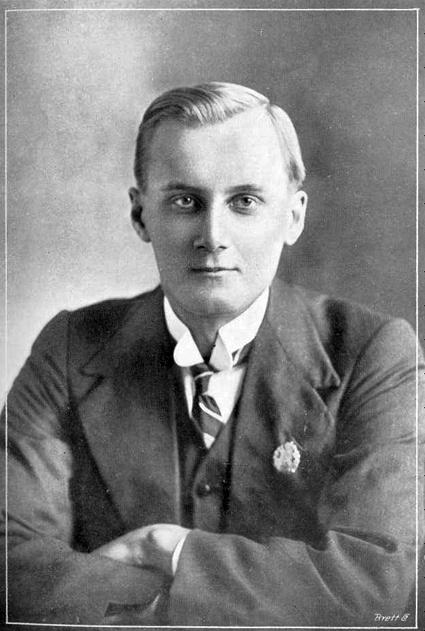Percy Comrie

When Percy Comrie left New Zealand for the First World War on 13 August 1917, he had been a father for less than a month. Comrie had enlisted the previous September, but the recurrence of an old knee injury saw him restricted to Home Service. After marrying and welcoming the birth of his son, Harold, he volunteered for active service with the Auckland Infantry Regiment.
Comrie was wounded in the right thigh and left elbow on 29 September 1918, as the 2nd Battalion, The Auckland Regiment crossed the much-vaunted Hindenburg Line during what became known as the Hundred Days Offensive. Admitted to the 34th Casualty Clearing Station, he died two days later on board an ambulance train en route to Rouen. He was buried in the St Sever Cemetery Extension on 4 October 1918, just 38 days before the Armistice.
Raised in Pukekohe, south of Auckland, Comrie attended Pukekohe East Primary School. Following the First World War, the school sought to commemorate the 27 former pupils killed during the conflict. On Anzac Day 1925, they unveiled a grove of 27 camellia trees, planted by students within the school grounds. School officials hoped that this enduring memorial would inspire future generations:
Mr J. Patterson, chairman of the School Committee … reminded the children of the meaning of the word Anzac, and of the valiant deeds of our men at Gallipoli, and in the other theatres of the war. He referred feelingly to the old boys whose names appeared on the Roll of Honour. He felt certain that if the call of Empire came, the boys growing up at the present time would respond in the same noble spirit that characterised the Anzacs.
The following year, stone plaques inscribed with the names of the fallen were placed beneath the trees, and framed portraits of the men were hung in the school hall. In 2006, the school restored the plaques, and moved them near the school’s front gate.
Further information
Credit

 Facebook
Facebook Google
Google Reddit
Reddit StumbleUpon
StumbleUpon Twitter
Twitter





Community contributions